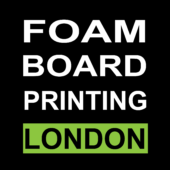How to Install Rigid Foam Board Insulation
Rigid foam board insulation is an efficient and effective way to insulate walls, roofs, and floors, offering excellent thermal resistance and moisture control. This guide will walk you through the steps to install rigid foam board insulation properly.
Materials Needed:
- Rigid foam boards (polystyrene, polyisocyanurate, or polyurethane)
- Measuring tape
- Utility knife or saw
- Adhesive suitable for foam board
- Screws and washers (for attaching to wood or metal studs)
- Caulk or spray foam
- Vapor barrier (if needed)
- Safety gear (gloves, goggles, mask)
Step-by-Step Installation Guide:
- Prepare the Surface:
- Ensure the surface is clean, dry, and free of debris.
- Repair any existing damage or gaps in the wall, roof, or floor where the insulation will be installed.
- Measure and Cut the Foam Board:
- Use a measuring tape to determine the dimensions of the area to be insulated.
- Mark the measurements on the foam board and cut using a utility knife or saw. Ensure accurate cuts for a snug fit.
- Attach the Foam Board:
- For walls, start at the bottom and work your way up. Apply adhesive to the back of the foam board and press it firmly against the surface.
- For additional security, especially in vertical installations, use screws and washers to attach the foam board to wood or metal studs. Space the screws about 12-16 inches apart.
- Seal the Edges:
- Use caulk or spray foam to seal the edges and any gaps between the boards. This step is crucial to prevent air leaks and ensure maximum insulation efficiency.
- Install a Vapor Barrier (if necessary):
- Depending on your climate and local building codes, you might need to install a vapor barrier over the foam board insulation. This helps prevent moisture buildup and potential mold growth.
- Cover the Insulation:
- In most cases, foam board insulation needs to be covered with drywall, plywood, or another fire-resistant material, as required by building codes. This not only protects the insulation but also improves the overall aesthetics of the installation.
- Check for Gaps and Inconsistencies:
- After installation, inspect the area for any gaps or inconsistencies. Fill any missed gaps with spray foam or caulk to ensure a complete seal.
Conclusion
Installing rigid foam board insulation is a straightforward process that can significantly improve the energy efficiency of your home or building. By following these steps, you can ensure a professional-quality installation that provides excellent thermal resistance and moisture control. Remember to always follow safety guidelines and local building codes to achieve the best results. Properly installed rigid foam board insulation will not only reduce your energy bills but also enhance the comfort of your living space.
